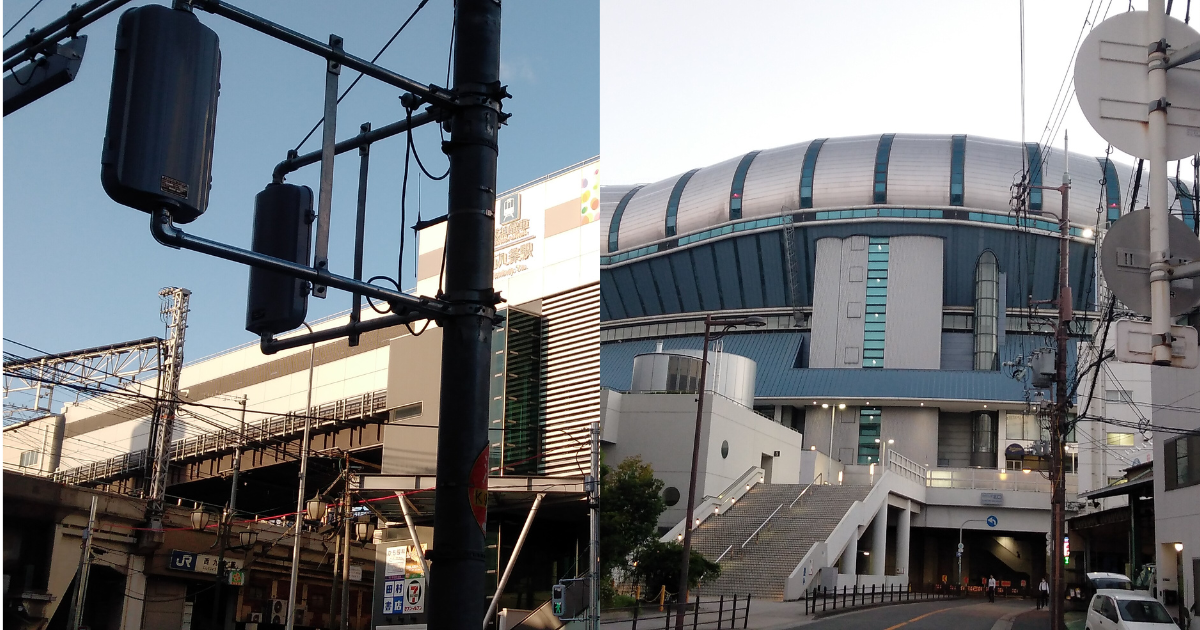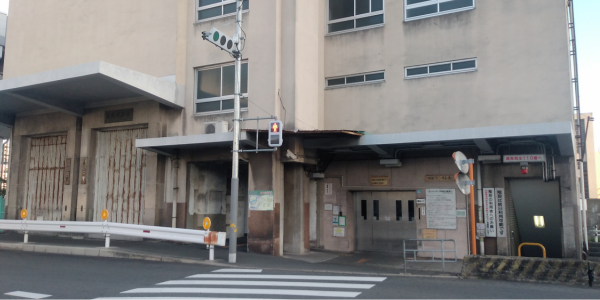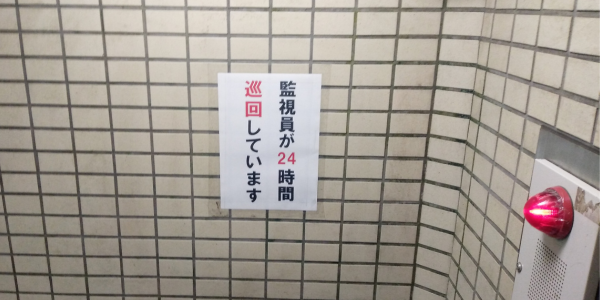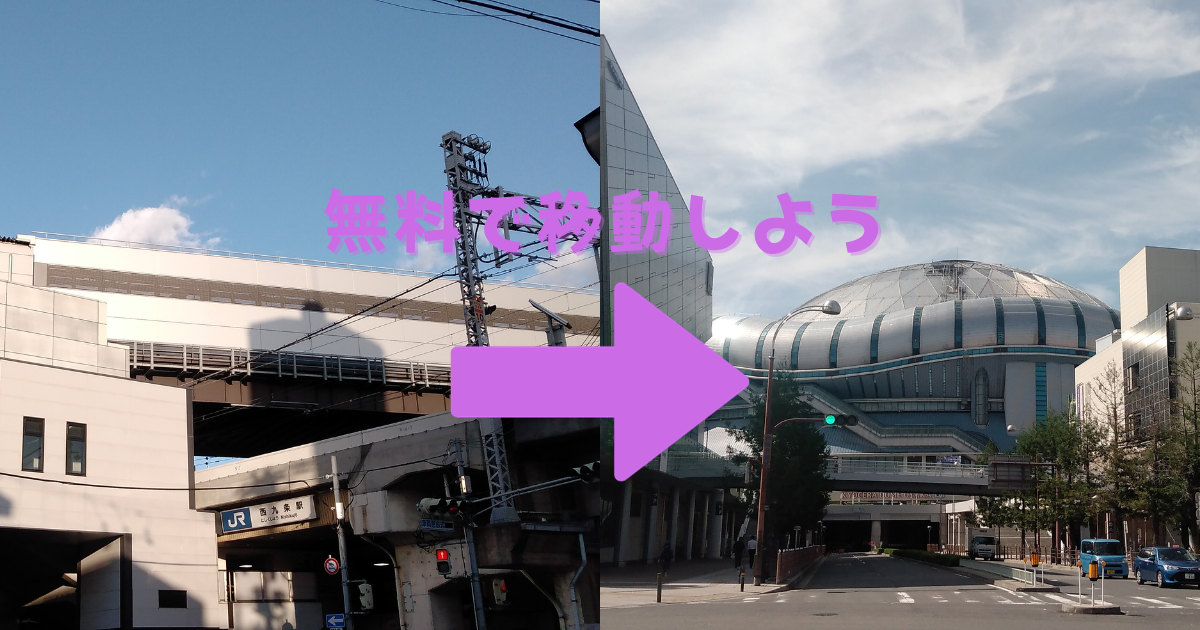When going to Universal Studios Japan by train, you must pass through the station “Nishikujo”.
If you have visited USJ several times from other prefectures, you have probably heard of the name of this station.
The JR Osaka Loop Line, JR Yumesaki Line, and Hanshin Namba Line connect this station “Nishikujo” to Umeda, USJ, Namba, Shin-Imamiya, Tennoji, Nara, Wakayama, Kansai International Airport, Koshien, Kobe Sannomiya, and other stations, so there are many people who use accommodations near this station.
One of the places these people visit is Kyocera Dome Osaka .
It is famous as a venue for professional baseball games as well as concerts by famous singers, bands and orchestras.
Actually, did you know that the Kyocera Dome Osaka is so close that you can walk from Nishi-Kujo to it?
This time, I will actually walk from Nishi-Kujo to Kyocera Dome Osaka and show you how long it takes and what you can see along the way.
This article is intended for the following people
For those who want to move slowly and for free
・Those who like to walk.
For those who want to see something different
Through this article, you will learn not only how to get from Nishi-Kujo to Kyocera Dome Osaka on foot, but also about an unusual means of transportation.
Thank you again for your cooperation.
General Directions from Nishikujo to Kyocera Dome Osaka

I think there are some people who don’t know general way of getting to Kyocera Dome Osaka from Nishikujo, so I will explain it to you.
The overwhelming majority of people traveling from Nishi-Kujo to Kyocera Dome will use the Hanshin Namba Line.
Take a train in the direction of Namba or Nara, and it takes only 2 stations to the nearest station, Dome-mae, and it takes only 3 minutes. All trains on the Hanshin Namba Line stop at various stations, so it does not matter which one you take.
The fare is 220 yen for the first ride.
220 yen for the first ride fare is expensive in my opinion.
Still, many people may not mind the fare because they can get there quickly.
Frankly speaking, this is the quickest and most reliable way.
*Official website of Hanshin Electric Railway
Some people may use Taisho Station, which is two stops away from Nishi-Kujo on the JR Osaka Loop Line inward train running counterclockwise.Taisho is the nearest station on the JR side to Kyocera Dome.
JR West Japan ” JR odekake net ” (in Japanese)
Compared to “Dome-mae station” of Hanshin Namba Line and “Dome-mae Chiyozaki station” of Osaka Metro Nagahori Tsurumi-ryokuchi Line,
it is somewhat remote and will take 7 to 10 minutes to walk.
The fare is 170 yen, which is cheaper than the Hanshin Namba Line.
However, no matter how fast or how cheap, I will not use those two routes.
I will walk to Kyocera Dome!
Let’s take a look at the itinerary.
Walking route from Nishi-Kujo to Kyocera Dome Osaka
I will follow the process below.
The starting point will be in front of the ticket gate of JR Nishi-Kujo Station and the ending point will be the Kyocera Dome Osaka East Exit.
1,There is a 7-Eleven in front of the ticket gate. There are exits on each side.
Right next to the exit on the right is the stairway to Nishi-Kujo Station on the Hanshin Namba Line.
Kyocera Dome is located to the southwest of Nishi-Kujo Station, so please proceed to the exit on the left.
2,As you exit the station, there is a map showing the area around the station.
3,Go straight along the elevated Hanshin Namba Line to the end of the street. You will see a river.
4, From here, you will use a certain way to cross the river to the other side (the biggest highlight in this article).The first is to cross the river to the other side.
5、You reach the other side of the river. Continue to move forward.
6,You arrive at Chuo Boulevard, “Chuo Odori”.
7,Further straight ahead, you will arrive at Minato Dori Avenue.
8,Pass it and turn right at the first traffic light.
9、Walking along the street between the park and the junior high school, you will arrive at AEON MALL Osaka Dome City.
10. Passing through it, you will arrive at the stairs leading to Kyocera Dome Osaka.
11. Go up the stairs and turn left to reach Kyocera Dome Osaka East Exit.
I will take a walk by following this process.
Let’s actually walk from Nishi-Kujo to Kyocera Dome.
1. There is a 7-Eleven in front of the ticket gate. There are two exits on each side. There is a stairway to Nishi-Kujo Station on the Hanshin Namba Line right next to the exit on the right. Kyocera Dome is located southwest of Nishi-Kujo Station, so please proceed to the exit on the left.

The exit on the left side looks like this. There are stores selling cosmetics, clothing, and various miscellaneous goods.
2. Upon exiting the station, you can see a map showing the area around the station.

I’m at “32”, a little above the middle of the map, just below the railroad tracks.
From there, go straight to the river.

This is what the area in front of the station looks like. There are many restaurants around the area.
There are several lodging facilities, and the area around the station seems quite busy.
≪Advertisement≫.
Business Hotel Urvanti Nishikujo
Nishi-Kujo Honjinso / private accommodation [provided by Vacation STAY].
SEKAI HOTEL Nishi-Kujo
Nishi-Kujo / Private Accommodation [Provided by Vacation STAY].
3. Walk along the elevated Hanshin Namba Line to the end of the street.

Go straight anyway.

Walk along the elevated Hanshin Namba Line.
It may be small and hard to see, but there is a Lawson store across the street.
4. I have reached the end of the road. From here, I will head for the other side of the river, but how in the world…?
I came to the end of the road.
However, there are no bridges around here which people can pass through.
Now what do I do?
The next building is the place that solves that problem.
At the same time, here is the place I most wanted to show you “my readers” in this article.

Do you know what this old warehouse-like building is?
It may be a little hard to believe, but from this building you can head to the other side of the river.
This structure is called “Ajigawa Zuido“.
Zuido…?
A Japanese word very unfamiliar to us.
In short, this is a tunnel.
Japan’s first submerged tunnel constructed by the submerged tunnel method Tunnel at the bottom of the river. The tunnel was the first of its kind in Japan.
The river runs directly behind this building. It is “The Aji River”.
The Aji river is also mentioned in the article previously posted ” I will teach you how to get from USJ to Tempozan for free! “.
In that article, I introduced the area near the mouth of the river, but the Aji River Tunnel is located considerably upstream from there.
The river is not very wide.
In fact, there is only one bridge on the Aji River that people can cross.
Approximately 1 km downstream from the Ajigawa Tunnel is National Route 43, over which the Hanshin Expressway runs. The Ajigawa Bridge along the highway is the only bridge that people can cross.
Therefore, many locals use this tunnel.
The history of the Ajigawa Tunnel is quite old, having opened in 1944.
At that time, not only people and bicycles but also automobiles could travel on the road.

A car elevator is located behind the large shutter on the left.
In the past, people could use it to descend to the bottom of the river, proceed through an underground passage to the other side of the river, and then use the elevator on the other side of the river to get to the surface.
If you are interested, please search for it on google or other search engines. You can see the photos of the time when cars were allowed to pass through the tunnel.
However, the passage of automobiles was discontinued in 1977 due to the opening of the Aji River Bridge, traffic congestion in the tunnels, and exhaust emissions.
The Ajigawa Tunnel, opened during the war, survived the Osaka Air Raid and continues to support the lives of many local people to this day.
Now let’s actually go through it!

There is an elevator on the left side that was once used exclusively for automobiles. It is no longer in operation.
A bicycle elevator (which can also accommodate people) is located in the center of the building.
To the right of it are stairs leading to the bottom of the river.

This is what it looks like up close.

We can pass through the tunnel for free. The elevators are open from 6 a.m. to midnight, but the stairs are available 24 hours a day.
Security cameras have been installed and safety measures are in place.
There is also a security guard patrolling near the middle of the underground passage.
Furthermore, during the morning and evening rush hours, security guards operate the elevators and control traffic on Konohana Ward and Nishi Ward sides.
To avoid disturbing the people around me, I took this photo just after the elevator with people on it had descended.
Pedestrians can also use the elevators.
However, in order to give priority to bicyclists and for my health, I took the stairs on the right to the tunnel.





Just keep going down…

I reached the underground passage.

When I arrived, there were about 10 people waiting in front of the elevator door.
I took this picture when everyone had boarded the elevator and no one was around.

A security guard on patrol near the middle of the aisle was greeting passersby.

I arrived at Nishi Ward. Again, I did not use the elevator but took the stairs to the ground level.



I just climbed the stairs and…


I arrived at the opposite shore.

I took this photo from a distance because there were many locals near the entrance to the tunnel on Nishi Ward.
5. Reach the other side of the river. Just keep moving forward.

The elevated line covered by a translucent wall is the Hanshin Namba Line.
They were installed to prevent noise to nearby residents.

Along the road, there is an old-fashioned popular theater.
As I walked by, I heard voices that I assumed were those of the performers and customers.
Perhaps a show was being performed.

The Hanshin Namba Line tracks go underground from this area.
6. Arrive at Chuo Boulevard. You will see Kujo Station on the Hanshin Namba Line and Osaka Metro Chuo Line on your left.


Kujo Station on the Osaka Metro Chuo Line and Hanshin Namba Line.
A little further in, you will find the Kujo shopping street. Since the shopping street is located in front of the station, it is quite busy.
≪Advertisement≫.
Close to Kujo Station, shopping district, supermarket, AEONMALL nearby / Private accommodations [provided by Vacation STAY].
Guest House Kirara [Courtesy of Vacation STAY].
Yonago, Lanfang / Private Accommodation [Provided by Vacation STAY].
7. Further straight ahead, you will arrive at Minato Dori Avenue.

After a while…


Minato Dori Avenue.
Go left to the Umeda and Yodoyabashi neighborhoods, and right to Tempozan.
But I continue to go straight ahead.
8、Pass Minato Dori and turn right at the first traffic light.

Turn right at the intersection with the blue light in the back.

There is a park near the intersection. And there it is in sight, Kyocera Dome Osaka.
The AEON MALL Osaka Dome City store can be seen on the left side of the building.

Turn right. Across from the park, with the blue fence, is the middle school.
If you go straight down this street…
8. Walking along the street between the park and the junior high school, you will arrive at AEON MALL Osaka Dome City.
9. Passing AEON MALL, you will arrive at the stairs leading to Kyocera Dome Osaka.


10. Go up the stairs and turn left to reach Kyocera Dome Osaka East Exit.

After climbing the stairs, you will see the north entrance on your right.
This is not the last stop. Continue to the left.


Down these stairs…

We have arrived. The last stop, Kyocera Dome Osaka East Exit.
Summary
This time, I took a free trip from Nishi-Kujo Station to Kyocera Dome.
Let’s review the itinerary.
Take the south exit of Nishi-Kujo Station and go straight down the street.
Passing through the Ajigawa Tunnel.
After exiting the tunnel, continue straight down the street.
After passing Chuo Boulevard, turn right at the first intersection past Minato Dori.
Go straight and you will arrive at the Kyocera Dome Osaka North Exit.
Then take a left and you will arrive at the Kyocera Dome Osaka East Exit, the last stop.
I was able to get there faster than I had imagined.
To verify on foot, it actually took me about 25 minutes to get there. Of course, it depends on the situation.
Without the Ajigawa Tunnel, I would have been forced to take a considerable detour and it would have taken much longer.
Through this walking trip, I could understand how important the Ajigawa Tunnel is.
Osaka still has many undiscovered attractions.
The Ajigawa Tunnel is one of them.
When you go to Kyocera Dome or return to Nishikujo after an event at Kyocera Dome, why not enjoy a little sightseeing through the Ajigawa Tunnel for free?
Thank you very much for reading this article to the end.
≪Advertisement≫.
Toyoko INN Osaka Dome-mae
ホテルソビアル大阪ドーム前
Smile Hotel Namba
![]()



